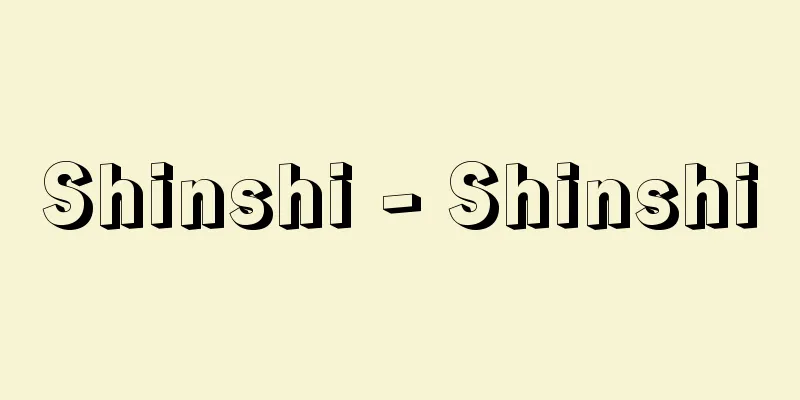Airing out clothes - Mushiboshi

|
This refers to removing moisture from clothing, books, hanging scrolls, tools, etc., and taking them out of storage and letting them air out to prevent mold and insect damage. Also called doyo-boshi or natsu-boshi, this is done during the summer doyo (18 days before the beginning of autumn). In the past, it was called bakuryo, and even today, the treasures of Shosoin and the treasures of each temple are aired out to air out. Insects that live on clothing are active during the humid rainy season, and mold is also likely to grow, so airing out clothes around doyo in the summer after the rainy season to remove moisture will prevent insect damage and mold. It is also useful for preserving the fabric and color of clothing for a long time without damaging them. The method is to open the windows to let in plenty of air, and hang the clothes on a rope stretched in the direction of the wind. The best time to do this is between about 9:00 a.m. and 3:00 p.m. The clothes are dusted off, folded properly, wrapped in a wrapping cloth made of paper or turmeric, and stored with an insect repellent. In recent years, drying during the Doyo period has come to be considered bad because it traps heat, so it is now customary to choose a time in the dry autumn season after two or more days of clear weather. [Yasu Fujimoto] A nishiki-e from the Edo period depicting kimonos being hung out to dry. The door is open and the kimonos are hung on a clothes rack. As airing is done during the doyo period (18 days before the beginning of autumn), it is also called doyo-boshi or natsu-boshi. Utagawa Kunisada (Toyokuni III) "Twelve Months, Minazuki, Doyo-boshi" Triptych 1854 (Kaei 7) National Diet Library Airing out Source: Shogakukan Encyclopedia Nipponica About Encyclopedia Nipponica Information | Legend |
|
衣服、書物、掛軸、諸道具などの湿気を除き、カビや虫害を防ぐために保管場所から取り出して風を通すことをいう。土用干し、夏干しともいい、夏の土用(立秋の前の18日間)に行う。古くは曝涼(ばくりょう)といい、現在でも正倉院の宝物の曝涼、各寺院の蔵物の曝涼などがそれぞれ行われる。衣服につく虫は梅雨期の湿気の多いとき活動し、またカビも生えやすいので、梅雨期を過ぎた夏の土用ころに、風を通して湿気を除去することが虫害やカビを防ぐこととなる。衣服の布地や色を損傷させないで長く保つためにも有用である。方法は、窓を開け放って風がよく入るようにし、風の向きに綱を張ってこれに衣服をかける。午前9時ごろから午後3時ごろまでがよい。衣服はちりを払い、正しく畳んで帖紙(じょうし)や鬱金(うこん)の風呂敷(ふろしき)に包み、防虫剤を入れて保管する。近年、土用干しは熱気を含むからよくないとして、空気の乾燥してくる秋の、晴天が2日以上続いた日のあとを選んで行うようになってきた。 [藤本やす] 着物の虫干しのようすを描いた江戸時代の錦絵。戸を開け放ち、衣紋掛けを用いて着物を吊るしているのがわかる。虫干しは、夏の土用(立秋の前の18日間)に行われることから、土用干し、夏干しともいわれる。歌川国貞(3世豊国)画『十二月ノ内 水無月 土用干』 三枚続 1854年(嘉永7)国立国会図書館所蔵"> 虫干し 出典 小学館 日本大百科全書(ニッポニカ)日本大百科全書(ニッポニカ)について 情報 | 凡例 |
Recommend
Abbasid Revolution
…The fourth caliph, Ali, represented the Hashemit...
Zaria (English spelling)
A city in north-central Nigeria, located about 75 ...
wind instruments
… In Japan, musical instruments are generally div...
Abura-gaya - Abura-gaya
A large perennial plant of the Cyperaceae family f...
A long story of an autumn night
A medieval children's story. It was created b...
Rozenberg, David Iokhelevich
Born: November 27, 1879. Shateykya Died: February ...
Hesperonesian
…These are the languages spoken in the western ...
Law of mass action
This law shows how the mass (concentration) of su...
Gyroplane
...An aircraft that obtains lift through freely r...
Ariwara no Motokata
Years of birth: unknown. A poet of the Heian perio...
Basic lead carbonate
Lead(II) hydroxide carbonate has the chemical form...
oneiroider Zustand (English spelling) oneiroider Zustand
...In Japan, the following three different states...
Oshima Coalfield - Oshima Electric Power
...Immigrants settled here in the early Edo perio...
Etana (English spelling)
A legendary king of ancient Babylonia. When Etana ...
Kinshincho - Kinshincho
...There are also various types of intimacy among...









